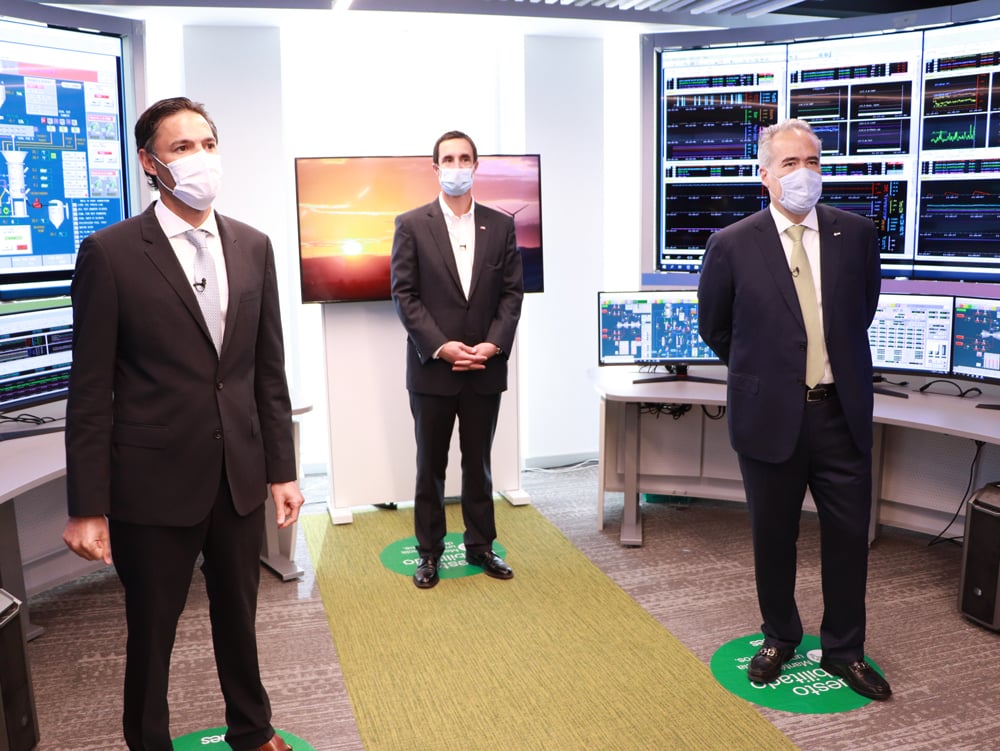
Efforts by the Chilean government and US-headquartered energy infrastructure company AES Corporation will boost the Latin American country’s installed base of battery storage.
The pair announced on Friday at the COP26 UN climate talks that they are working together to bring Chile’s installed battery energy storage system (BESS) capacity to more than 300MW by 2023. It was a rare direct mention for battery storage during the COP26 talks in Glasgow.
Enjoy 12 months of exclusive analysis
- Regular insight and analysis of the industry’s biggest developments
- In-depth interviews with the industry’s leading figures
- Annual digital subscription to the PV Tech Power journal
- Discounts on Solar Media’s portfolio of events, in-person and virtual
Or continue reading this article for free
AES Andes, AES’ local subsidiary (formerly known as AES Gener) is currently constructing a 112MW / 560MWh five-hour duration lithium-ion BESS project in Chile’s Antofagasta region, paired with 253MW of renewable energy generation.
Energy-Storage.news reported as the company broke ground on that project in October 2020. AES’ track record in the country is even more historic for the energy storage industry: the world’s first grid-connected large-scale lithium-ion battery storage system was deployed by the company to increase the efficiency of a Chilean coal power plant as early as 2009.
AES’ battery storage system supplier and integrator of choice is generally Fluence, which is part-owned by AES and recently floated an IPO which brought its valuation up to around US$4.7 billion.
The announcement made last week covers the addition of 188MW of additional new BESS capacity. AES Andes CEO Ricardo Falu said this represents an investment by Chile of about US$400 million. It would bring the country’s installed capacity in megawatt-hour terms to 1,563MWh, an increase of about 25x from just over 60MWh today.
The country’s energy policy calls for 70% of its energy to be derived from renewable energy sources by 2030. Minister for Mining and Energy Juan Carlos Jobet noted that the country’s National Energy Policy modelled the need for at least 2,000MW of energy storage to help integrate that renewable energy onto Chile’s grid.
Minister Jobet referred to the need for a rapid increase in energy storage capacity of “all types” of technology to provide flexibility to the electricity system, referring to batteries and liquid air energy storage (LAES) among them.
UK company Highview Power, which is globally the only provider of a commercial and grid-scale LAES system technology, has already begun the process of developing a long-duration 50MW / 500MWh LAES plant in the country’s sun-drenched Atacama Desert region.
In terms of other large battery projects, Energy-Storage.news reported at the end of this October that Statkraft Chile is developing a wind power project on public land at which it expects to install 1GWh of batteries and in July Engie Chile won 1.5GW of development rights for hybrid solar and wind generation paired with battery storage.
At the other end of the scale US commercial and industrial (C&I) energy storage provider Stem Inc recently said it is developing what is believed to be Chile’s first virtual power plant (VPP), aggregating behind-the-meter C&I systems of between 0.5MWh and 2MWh to form a larger grid asset.
AES reported its Q3 financial results on 3 November and in doing so said it expected to add 5GW of new long-term renewable energy contracts during this year and reaffirmed its annual growth target of between 7-9% through to 2025, as reported by our sister site PV Tech.
